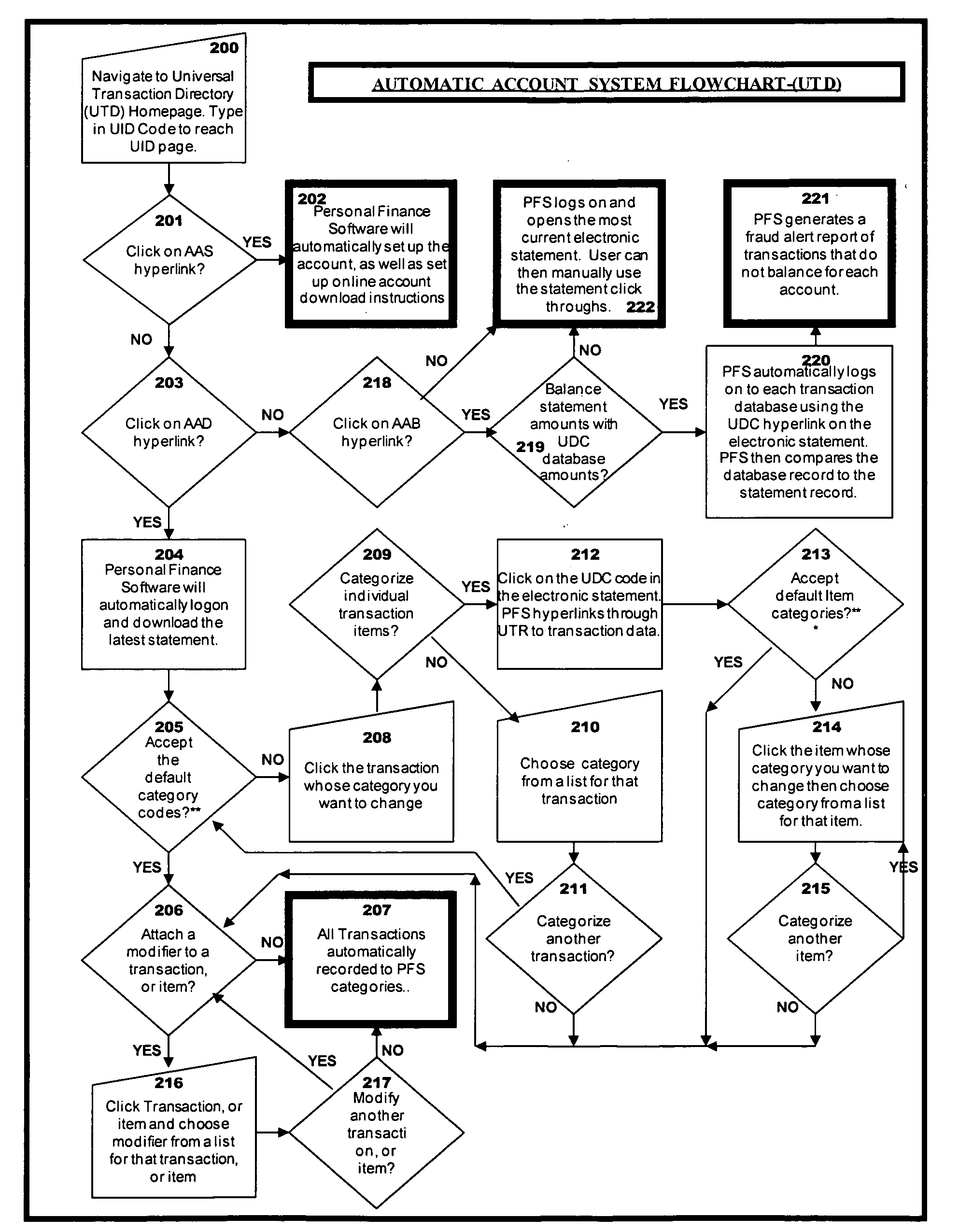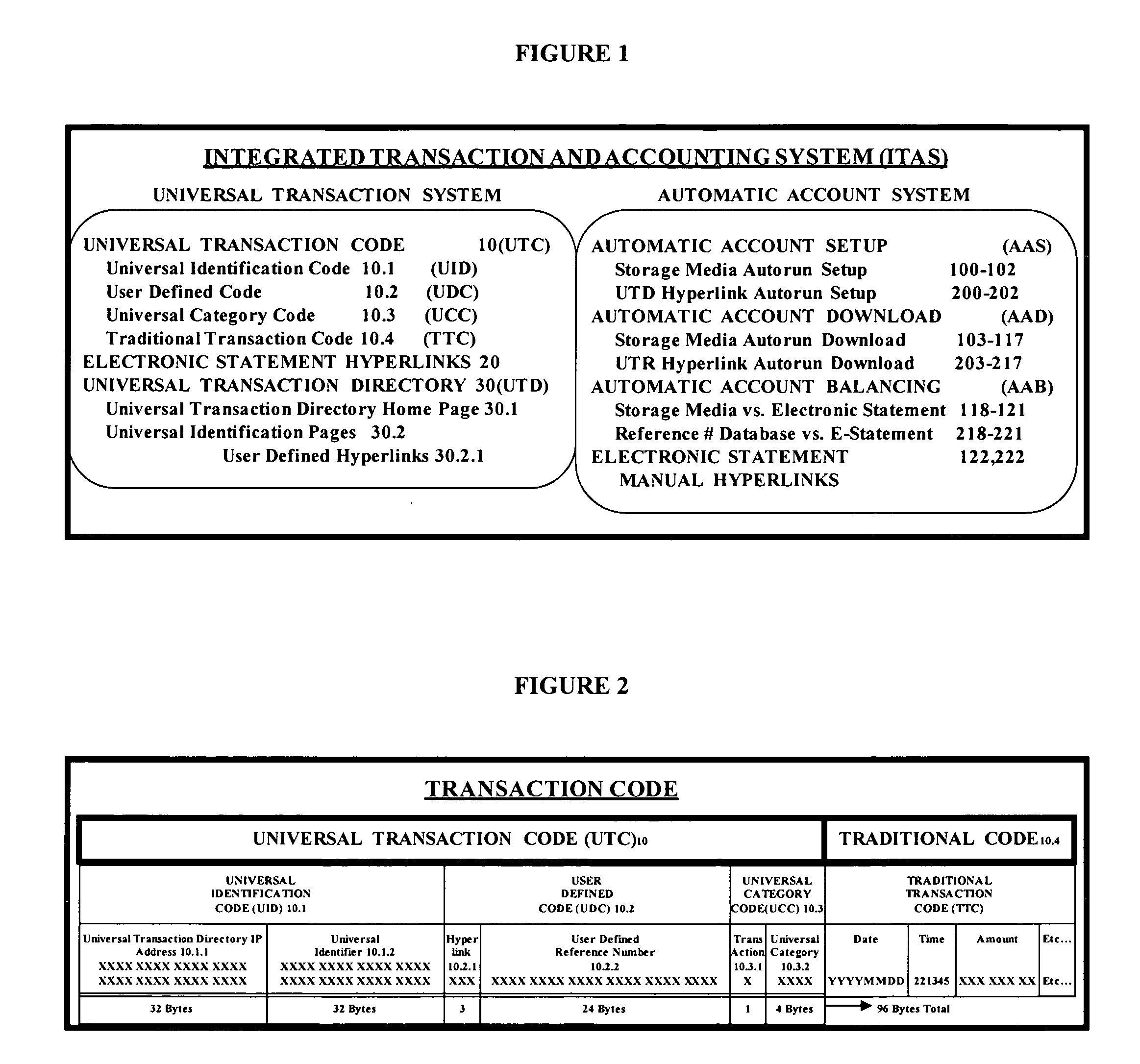Universal transaction code (UTD) used to standardize the method of capturing, storing, and retrieving transaction data
a technology of transaction data and transaction code, applied in the field of transaction code, can solve the problems of not being e-commerce has still progressed at a much slower pace than industry, and pfs is still not actively used in most homes,
- Summary
- Abstract
- Description
- Claims
- Application Information
AI Technical Summary
Benefits of technology
Problems solved by technology
Method used
Image
Examples
Embodiment Construction
FIG. 1 Integrated Transaction and Accounting System (ITAS).
[0071]FIG. 1 shows the overall components of an Integrated Transaction and Accounting System (ITAS). There are two main sections to the ITAS.
[0072]The first section of the ITAS is a Universal Transaction System. It consists of a standardized Universal Transaction Code (UTC), which is included in all transactions regardless of type. Since the standardized code elements are included in a transaction, they are also included on any electronic statement. The UTC code within an electronic statement is a hyperlink through a standardized Universal Transaction Directory (UTD) to a web page defined by the hyperlink TCP / IP.
[0073]The second section of the ITAS is an Automatic Account System. It consists of a means to automatically establish accounts in Personal Finance Software called Automatic Account Setup (AAS). It also consists of an improved method to automatically download account statements and data and transaction records, calle...
PUM
 Login to View More
Login to View More Abstract
Description
Claims
Application Information
 Login to View More
Login to View More - R&D
- Intellectual Property
- Life Sciences
- Materials
- Tech Scout
- Unparalleled Data Quality
- Higher Quality Content
- 60% Fewer Hallucinations
Browse by: Latest US Patents, China's latest patents, Technical Efficacy Thesaurus, Application Domain, Technology Topic, Popular Technical Reports.
© 2025 PatSnap. All rights reserved.Legal|Privacy policy|Modern Slavery Act Transparency Statement|Sitemap|About US| Contact US: help@patsnap.com



